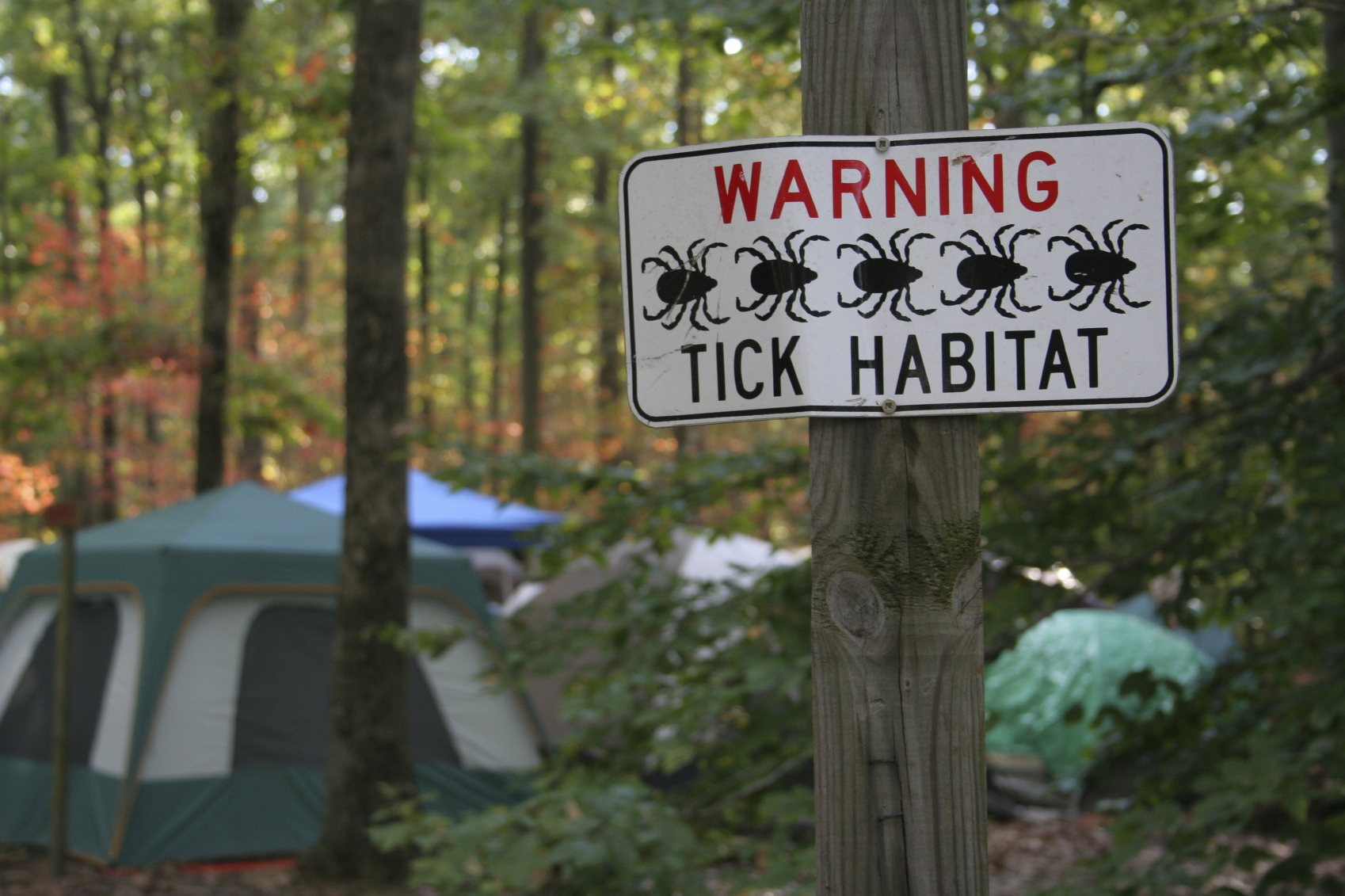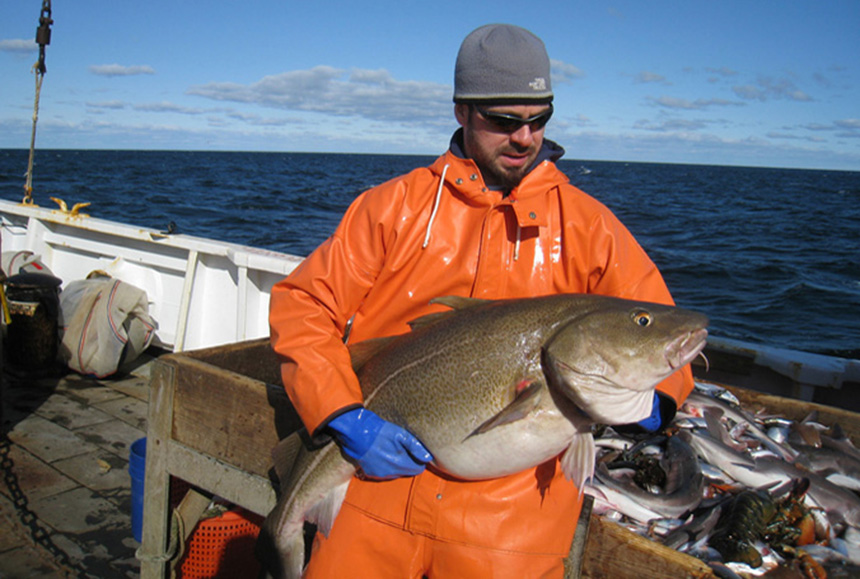An Uptick of Lyme Disease in Southern New England
Health officials and researchers debate the role climate change is playing, but they agree the region’s tick population is growing
January 18, 2016
Lyme disease is a growing health threat in southern New England, and climate change could be making it worse.
The disease got its name after the symptoms, which likely have been around for decades and perhaps centuries, showed up simultaneously in a group of children and adults in Lyme, Conn. during the mid-1970s. The town, 75 miles south of Providence, sits at the center of one of the biggest health crisis in the region.
The condition finally had a name, but it wasn’t until 1991 that the Centers for Disease Control and Prevention (CDC) started tracking cases. Massachusetts didn’t begin tracking the disease until 2005; Rhode Island in 2010.
According the Rhode Island Department of Health, reports of Lyme and tick-related infections are climbing, up 25 percent alone between 2013 and 2014. Connecticut, meanwhile, has seen its cases drop slightly; Massachusetts has seem its cases of Lyme rise since 2010, before dipping slightly in 2014.
Lyme disease is spreading to other states. Between 1993 and 2012, the number of counties in the Northeast reporting a high incidence of the disease grew 320 percent, according to the CDC.
In 2014, Rhode Island had the fourth-highest rate of Lyme disease in the country per capita. Maine, Vermont and Massachusetts were the top three, suggesting that the malady is moving north.
According to the CDC, Lyme-infected ticks will have a startling migration westward and northward because of climate change. As a result of misdiagnoses, the CDC also has upped it annual U.S. infection rate from 30,000 to 300,000 annually.
Disease hot spots
It wasn’t until the past few years that the medical community began focusing on the illness exclusively. In southeastern New England, special Lyme disease clinics have recently opened in Newport, R.I., and Boston, and in smaller medical offices in disease hot spots such as North Kingstown, R.I., and on Cape Cod. Patient support groups have proliferated in those areas, and online.
Cape Cod, Nantucket and Martha’s Vineyard have the highest Lyme-infection rates in Massachusetts. According to the CDC, Chilmark, on Martha’s Vineyard, has had the highest reported Lyme cases, with 1,316 per 100,000 residents between 2010 and 2014. Marion has the highest infection rate along the South Coast, with 383 infections per 100,000.
Link to climate debated
While there is a divide among medical professional about the testing, treatment and lingering effects, there also is debate about the connection to climate change.
Climate-change assessments in Massachusetts and Rhode Island suggest that global warming will increase the prevalence of ticks carrying Lyme.
“A similar trend is probable with tick-borne diseases as well, resulting in the prospect of more human cases of Lyme disease, babesiosis (a malaria-like parasitic disease) and anaplasmosis (a bacteria which infects white blood cells),” according the 2011 report from the Massachusetts Office of Energy and Environmental Affairs.
University of Rhode Island entomology professor Thomas Mather, however, argues that the connection between Lyme disease and climate change is more complicated. Climate variations, he said, may allow ticks carrying Lyme to persist, but he noted that extreme weather changes also may have the opposite effect. The expected swings in temperature and humidity may threaten the habitat of Lyme disease-carrying black-legged ticks, also called deer ticks. These ticks thrive in areas with a fairly regular temperature-to-humidity mix.
However, extreme weather changes may improve the ecology for other insects that carry the West Nile virus and eastern equine encephalitis.
“More extended humidity is what ticks need to survive,” Mather said. Extended bouts of humidity in June, when nymphal ticks are most active, followed by an extended dry spell might “mess with their heads a little and they struggle to survive.”
Bolstering his hypothesis are the Massachusetts and Rhode Island climate assessments that predict the region will likely get more precipitation, while also experience one mini-drought per summer on average.
The Rhode Island report is careful to include Mather’s perspective, but cautions that it will be watchful for a rise in Lyme-infected ticks and other vector-borne diseases.
“The trends over the past 20 years and our climate projections provide useful information to help us project future growth of the tick population, which may correspond to an increase in Lyme disease risk,” according to a 2015 climate-change assessment by the Rhode Island Department or Health.
The uncertain connection between Lyme disease and climate change hasn’t kept some researchers from arguing that the two are concurrent. Researchers at the Harvard School of Public health are documenting Lyme’s northern spread.
“The most common vector borne disease in North America and Europe, for example, is Lyme disease,” according a Harvard report. “In the United States, children ages 5-9 have the highest annual incidence of Lyme disease. The primary vector here is the black-legged tick, which has been expanding its northward range into Canada as annual temperatures warm.”
And there is little doubt that development is putting more people in tick habitat. Experts agree that there are, as Mather said, “more ticks in more places.” According to the CDC, deforestation is bringing people into more contact with tick-friendly habitat.

Better awareness
Further complicating the upward trend in reported Lyme disease cases is the increased awareness and reporting. Researchers and medical professionals agree that more people are getting checked and identifying with the symptoms for early and chronic Lyme disease, which in itself is controversial.
The divide has some physicians and health-care officials believing that the bacterium that causes Lyme disease can change, hide and re-emerge in the body after the initial treatment with antibiotics. Others say that the bacteria is killed off after treatment and that lingering symptoms should be treated on their own and without the prolonged use of antibiotics.
“The Lyme is going to persist if you don’t treat all the forms of the Lyme and co-infections, and this is why it leads to treatment failures and the difficultly in treatment and the necessity for longer treatment,” said Susan Nueber, a nurse practitioner who has been treating Lyme disease since 2001 and runs a clinic in Cumberland, R.I.
The debate has been so intense that Rhode Island passed legislation in 2014 that protects physicians from liability for treating chronic Lyme disease and helps patients with insurance coverage for testing and treatment.
Dr. H. Ram Chowdri, of Hawthorn Medical Associates, has treated infectious diseases in the New Bedford, Mass., area since 1980. He said antibiotic treatment lasting longer than eight weeks comes with added health risks. He said better diagnosis and testing are two reasons that more cases of Lyme are being reported.
Deer hunter
One response to the increase in deer has been to allow hunting to cull the host population of the disease. For the first time in more than a hundred years, a deer hunt was held last December at the 7,000-acre Blue Hills Reservation in Quincy, Mass. Last spring, resident hunters on Block Island were paid $150 per deer killed during a special hunt. Both hunts were held, in part, to scale back the spread of Lyme disease.
Block Island has one of the highest deer populations in the region, with an average of 100 per square mile. Blue Hills has an estimated 85 deer per square mile. Massachusetts health officials believe a healthy deer population is about eight to 10 deer per square mile.
One Harvard School of Public Health researcher, however, says that culling the deer heard is ineffective against Lyme disease.
If you kill deer “you would simply have more ticks per deer because the surface area of each is enough to support many ticks. Just killing deer won’t do the job,” said Tamara Awerbach, a health scientist with Harvard in a 2010 interview.
The results of these deer hunts won’t be know for years. For now, the most agreed upon option to prevent Lyme infection is protection. Health experts suggest wearing proper clothing, preferably coated with tick repellent, when spending time in nature and even in your backyard.




Not only white tailed deer are hosts for ticks but mice as well. Southern RI, especially in rural communities with stone walls that have been in place for decades act as mice “condos” and the mice proliferate.
Sending Prayers and 💚, around 7 months ago I began to do a lot of research and came across Ayurveda treatment for Lyme disease it is a smashing one of a kind treatment for reversing Lyme. After using the Ayurveda treatment I got from natural herbs centre i began to notice a reduction in symptoms till it all vanished. Going back to my farm work again gives me so much joy. I feel better and breath better. I Just wanted to share for people suffering from this horrible disease.. I was fortunate to have the loving support of my husband and family. I make it a point to appreciate every day!